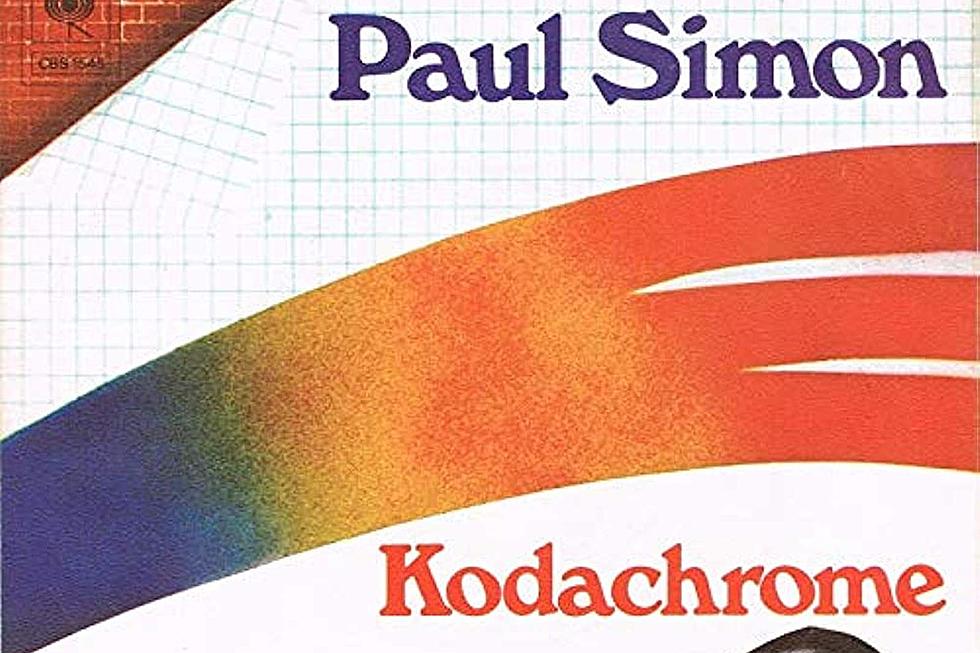
When Paul Simon Pondered Mortality on ‘So Beautiful or So What’
Paul Simon's music always had a globetrotting streak, but as he settled into middle age, he became a much more deliberate world music traveler, taking his audience to exotic locales with albums that wrapped his classic singer-songwriter sound in a series of colorful coatings. With his 12th solo studio LP, 2011's So Beautiful or So What, he took listeners someplace completely unexpected: back where he started.
This isn't to say the record necessarily found Simon revisiting well-worn sonic territory. As he had on each of his previous outings, he altered his palette again for So Beautiful or So What, experimenting with new sounds and production techniques. But the songs themselves sprung from a surprising return to Simon's roots — after spending 20 years or so building tracks from the rhythm bed up, he went back to his guitar as a primary songwriting instrument.
"I was really out of practice in just sitting with the guitar," Simon told the Atlantic in 2011. "I was really starting with a blank page."
The change of instrumental approach forced Simon to think about chord progressions and melodies from a new perspective. Although he'd written some of the most indelible songs of his generation with little more than a guitar, he'd reinvented himself as a rhythm-oriented writer with 1986's Graceland, an album that also saw him developing a much more abstract lyrical style — one that placed a greater emphasis on the way words sounded in the context of a song, creating impressionistic pictures that were much more open to interpretation.
Returning to his earlier methods as an older man and a more experienced guitarist and songwriter, Simon found himself telling a series of stories that seemed to be preoccupied with a set of related themes — mainly aging, mortality, and the afterlife. Although he claimed it wasn't deliberate — and has insisted he often has no idea where his lyrics are coming from — the shape So Beautiful or So What started to take didn't go unnoticed.
"There was a moment where I realized, wow, five out of the first six songs I wrote have God in them, and I thought, What could this be about?" Simon told New York magazine. "I wondered whether there was a subconscious theme that I was tapping into. I have used Christian symbols and imagery before in songs. It’s very strongly evocative, so it may just be coincidence — but it may not be."
In service of that imagery, Simon took an intriguingly minimalistic approach to production. Working at his home studio in Connecticut in tandem with producer Phil Ramone, Simon found himself fascinated with the idea of using bells as the record's primary percussion, and shaped the arrangements accordingly. Although he still used a variety of drums on the recordings, Simon took pains to roll back and minimize portions of their presence in the mix, creating room for gongs, bells, and glockenspiels — as well as the unique echo and decay left in their wake.
Listen to Paul Simon Perform 'So Beautiful or So What'
Simon and Ramone also used a handful of samples on So Beautiful or So What, most noticeably on the record's first single, "Getting Ready for Christmas Day," which rests on portions of the 1941 sermon of the same name by Reverend J. M. Gates. For Simon, who'd first heard it as part of the Dust-to-Digital box Goodbye, Babylon, the warning cry of Gates' sermon fit perfectly with his record's themes of reckoning.
Yet while Simon may have used Gates' sermon as a building block, So Beautiful or So What wasn't delivered from a pulpit. Again and again, the narrators in the album's songs faced down the sum total of a lifetime of choices, but they weren't judged — even when they were expecting it, as in "The Afterlife," which describes Heaven's waiting room as a sort of posthumous DMV.
He wasn't averse to peering into the darkness, as evidenced by the heartbreakingly poignant final verse of the deceptively bouncy "The Rewrite," which initially seems to be about an author overhauling his story's final act, but reveals itself as the anguished delusions of a man who desperately wishes to undo a series of life-altering mistakes. Yet even on the edge of the abyss, Simon's characters find grace — appropriate for an album that asks "Questions for the Angels" and determines "Love Is Eternal Sacred Light."
"How was all of this created? If the answer to that question is God created everything, there was a creator, than I say, great! What a great job," Simon told PBS when questioned about the album's spiritual overtones. "And I like the idea. I find it very, I don’t know, I find it comforting in some way. But if the answer to that is there is no God, I don’t feel like, 'Well, what a jerk I’ve been.' I feel, 'Oh, fine, so there’s another answer.' I don’t know the answer. I’m just a speck of dust here for a nanosecond, and I’m very grateful."
This album's earnest, questioning spirit wasn't exactly a natural fit for the Top 40, but that wasn't anything new for Simon: Even as he enjoyed his Graceland resurgence, he hadn't had much luck getting his songs on the radio. So Beautiful or So What resonated where it counted — among Simon's fans, who sent the album to a No. 4 debut upon its April 8, 2011 arrival.
For many listeners who'd grown up with Simon's music, So Beautiful or So What arrived at a time when they found themselves faced with the questions his characters grappled with in the songs; as he had so often in his career, he offered a tuneful mirror in place of platitudes and easy answers. The album's attitude, as Simon summed it up in the title track, was a sort of musical shrug — but a bemused, thoughtful, and ultimately comforting one.
"I think it’s like you have a choice you can make," he told Huffington Post. "It’s your choice that it’s so beautiful or so what — it’s up to you."
Paul Simon / Simon & Garfunkel Albums Ranked
More From Ultimate Classic Rock









